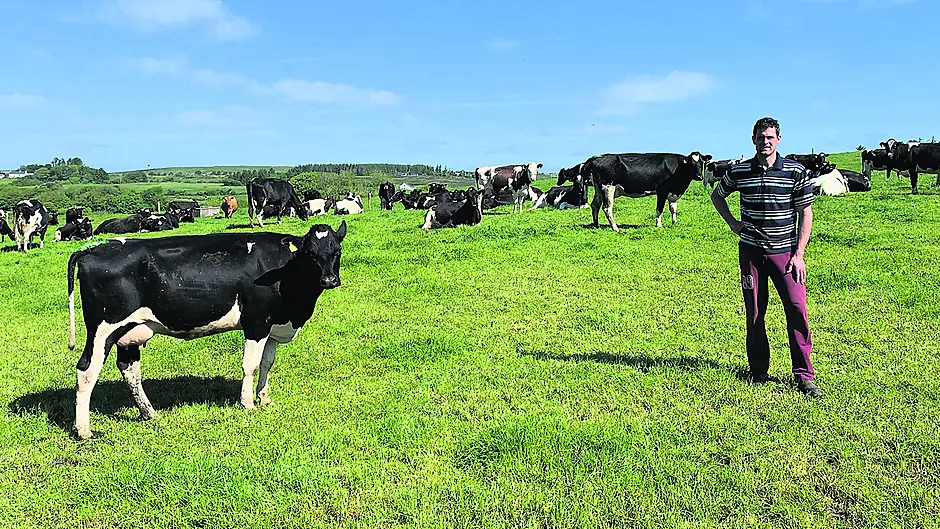Like many holdings in West Cork, Peadar O’Driscoll’s farm is fragmented. Part of the Teagasc/Carbery farm monitor programme, his land is also part of the national SignPost programme comprising farmers tackling climate change and embracing solutions
PEADAR O’Driscoll from Church Cross outside Skibbereen is a monitor farm in the Teagasc Carbery Joint Programme, as well as being a farmer in the national SignPost programme.
The focus of the joint programme is sustainable dairy production and demonstrating the key profit-driven measures that farmers can implement to improve sustainability and reduce the impact on water quality.
Like many farms in West Cork, the farm of 46 hectares is fragmented. Peadar supplies Drinagh Co-op with the milk produced from his 64 cows. He milks through a modern 12-unit parlour and has a grazing platform of 30 hectares. The overall stocking rate is 2.5 livestock units per hectare.
In 2021, Peadar sold 440kg of milk solids per cow to the co-op. The herd is spring calving a current herd EBI of €127. The heifers that joined the herd in 2022 were €165 EBI. The farm rears all its own replacements using the outside blocks of land for both heifer rearing and silage.
Peadar has a big focus on putting in good farm roadways on the farm to improve access to grazing paddocks throughout the year and make the farm easier to manage. He has also invested in the winter housing and milking facilities to a very high standard.
This year, Peadar started calving on the 31/01/22 and had a six-week calving rate of 85%. He had a 21-day submission rate for the cows of 73% and 87% for the heifers.
Cows which haven’t been seen bulling have been seen by his vet and coiled or have been ear marked for culling. Peadar plans to breed to AI for 11 weeks and to date has used a team of 11 dairy bulls and over the next few weeks will change to a team of beef bulls.
Cows are milking well with a current performance of 1.91kgs MS/cow with 2kgs meal. Cows are into covers of 1400kgs/ DM/Ha. Peadar is following the cows on grazing ground with 20 units of nitrogen with sulphur.
At present Peadar is pre-mowing paddocks with the aim to reduce workload with topping after grazing and 24 acres of first cut silage was made on May 27th. There are five acres of surplus paddocks which have been taken out for bales, yielding seven bales per acre. These paddocks have also got 1,500 gallons of watery slurry.
Going forward, grazing clover swards is a key measure to reduce dependence on expensive chemical nitrogen.
As a consequence, it reduces the carbon footprint and the production of nitrous oxide. Research has proven the benefits of using clover to reduce chemical nitrogen and has shown increased milk solid per hectare.
The challenge for farmers is to firstly start reseeding with clover to establish it and then adapt to manage it correctly to realise the benefits on the farm.
The aim would be to establish a sward with 30% clover and over a number of years to reseed or oversow all paddocks on the grazing platform.
With this in mind, Peadar has re-seeded 2.5 acres with a mix of white clover and perennial ryegrass. He has sown 2kgs of Iona white clover per acre and he plans to develop the level of clover on his farm over the next number of years.
In the last month, Peadar has spread 20 tonnes of ground limestone on grazing paddocks. To date, Peadar has 60 tonnes of lime in accordance with his nutrient management plan to improve the soil fertility of the farm.
• David Purcell is a business and technology dairy advisor based in the Teagasc Office in Skibbereen.








